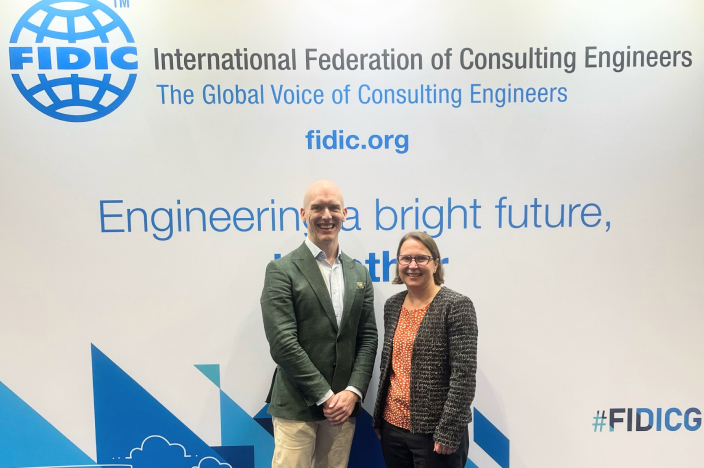September 2025
Holding steady, moving forward
Jonathan Cartledge, Chief Executive Officer, Consult Australia

Cape Town felt like the right place to talk about infrastructure as ballast. It’s a city that has always relied on ports, roads, energy, water to steady society. And, like Cape Town, our industry faces compounding and competing challenges: climate shocks, financial pressures, political instability and technological disruption.
Ballast steadies the ship – and without it, steering is impossible. The challenge for infrastructure leaders, and engineers in particular, is to provide that stability while steering their own businesses through transformation.
I thought about this idea as Consult Australia’s new President Natalie Muir and I spoke with international colleagues about how engineers balance immediate pressures with long-term purpose.
Natalie (who we feature in this month’s Consulting Matters) and I travelled to Cape Town this month to represent Consult Australia members at FIDIC’s 2025 Global Infrastructure Conference. Three themes came through loud and clear:
- Sustainability in the face of climate pressures and geopolitical uncertainty.
- Digitalisation, especially the potential of AI to navigate the twin challenges of decarbonisation and resilience.
- People, with advanced digital tools valueless without skilled people to apply them.
These themes crystallised in the final session, Global leadership – vision given uncertain times, which left us with plenty to ponder.
Logashri Sewnarain, CEO of SMEC South Africa, captured the zeitgeist with one word: “polycrisis”. But she also reminded us that infrastructure provides the certainty communities need as shocks multiply.
Teddy Daka, CEO of engineering and infrastructure advisory firm Zutari South Africa, spoke of the need for firms to build “absorptive capacity” – to interpret turbulence, adapt to change and maintain a long-term view.
My takeaways?
Firstly, that infrastructure must be a stabiliser and a transformer in uncertain times.
Second, that finance, climate and technology pressures can either drive or delay transformation – the choice is ours.
And finally, that collaboration across government, industry, finance and civil society is the bridge between theoretical vision and practical resilience. That’s why initiatives like the new Parliamentary Friends of Engineering are so important (read on to learn more).
Uncertainty is unavoidable. But with leadership and vision, infrastructure can be the ballast that keeps communities steady through turbulence.